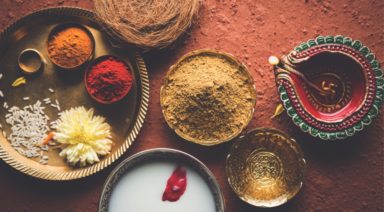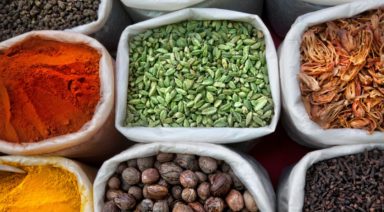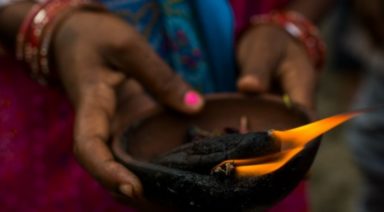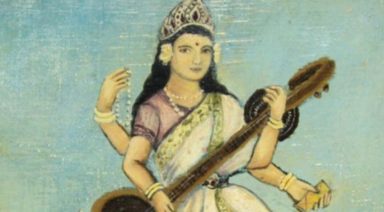What Your Dosha Type Means for Your Diet

Ayurveda is Sanskrit for “the wisdom of life.” Ayurveda originated in India and pre-dates modern medicine by thousands of years.
Ayurveda healing differs from modern medicine in the following ways:
- Focuses on preventative techniques, instead of merely reacting to illness as it arises
- Diet and habits are more strongly considered when diagnosing and treating
- Emphasizes on the uniqueness of the individual and finding what works for you personally
Three Types of Ayurveda Doshas
There are three types of Ayurveda Doshas – kapha, pitta, and vata. Doshas are more commonly known as mind-body types and are derived from the five elements.
While we all have aspects of each of the three doshas, for most of us, there is one dosha that dominates. You can also be a combination of two doshas, but that is less frequent. Before you learn about the characteristics of each type of dosha, determine which one(s) are most pertinent to you by taking this quick quiz.
I took this quiz with a little bit of healthy skepticism, not expecting anyone dosha to be that much stronger than the others, but for me, the traits corresponding to vata dosha are twice as strong. There are several dosha quizzes online, all of which gave me similar results.
Once you determine which dosha pertains to you, read about the strengths and weaknesses of that dosha and what dietary changes you can make to keep yourself in better alignment. While this article focuses on dietary modifications, there are all sorts of supplements, lifestyle and yoga practices that are also beneficial.
Doshas: States of Being
- Balanced – This is when all three doshas are present in a proportional way. It is important to note that balanced doshas look different for each person
- Decreased – In this instance, the presence of one or two doshas is reduced.
- Increased – When a given dosha is overly present in a body, it needs to be realigned, often by using the medicine of opposites
The Medicine of Opposites
Similar to other types of Eastern medicine, Ayurveda healing is about balance and alignment. In order to stay balanced, counter your natural dosha inclinations with foods, lifestyle habits, and exercise that are the polar opposite. For instance, for the stable kapha dosha, add some adventure and movement to your life. This type flourishes in dry climates and can handle both hot and cold. For the anxious, changeable vata dosha practice gentle, restorative yoga or calming mediation. In addition, vatas perform best in warmer climates. Lastly, for the fiery pitta dosha, eat cool, refreshing foods like cucumbers and apples and avoid hot, spicy foods. Moreover, pitta types flourish in cooler climates and are likely to excel in winter sports like skiing and hockey.
Vata Constitutions
The primary function of the vata dosha is movement and is related to the elements of air and space.
- Physical traits include: susceptible to cold temperatures, light bodyweight, and dry skin
- Personality traits include: creative, moving, quick, energetic and changeable
When balanced, vata types are high-energy and adventurous. They are prone to being creative and flexible. They tend to take initiative and are very active. They enjoy being warm and need lots of human contacts, both emotionally and physically. Each dosha type responds to and receives energy differently. Individuals with strong vata dosha get their energy in bursts, which means they are also prone to bouts of fatigue.
When unbalanced, they can suffer from insomnia, anxiety, and digestive issues. They can be spacey. They are also likely to blame themselves when things go wrong. An overactive mind is one of the greatest challenges for this dosha type, which can lead to anxiety-related health issues or insomnia. For a vata, these issues compound upon each other and will continue to make things worse until tangible steps are taken to realign your habits. Mediation, sticking to regular mealtimes, and getting at least eight hours of sleep are all helpful ways to get back on track. Routines are often the key for those that lean more vata.
If your vata dosha is increased, try adjusting your dietary patterns:
- Eat food combinations that are salty and sweet; avoid foods that are bitter
- Season your food with warming spices such as nutmeg, cinnamon, allspice and ginger
- Enjoy a warm cup of decaffeinated tea before bedtime, but avoid cold drinks
- Minimize caffeine and nicotine intake
- Avoid eating too much-processed food such as chips, cereals, and frozen meals
Pitta Constitutions
The primary function of the pitta dosha is transformation and corresponds to the elements of fire and water.
- Physical traits include: hot-bodied, medium build, and oily skin
- Personality traits include: intense, sharp, outspoken, intelligent, and fiery
When balanced, pitta types are fiery and energetic. They sleep soundly for short periods of time and have a strong sex drive. They also have good digestion. They tend to be are very intelligent, completive and incredibly driven. When they have control over their temper, they make strong leaders.
When unbalanced, they can struggle with heartburn, ulcers, and rashes. Also, since they have very good digestion, they can over-eat, which can lead to indigestion or weight issues. They also struggle with short-tempers and an inability to control their anger. Increased levels of pitta dosha can lead to inflammation in the body and rising emotional tensions.
If your pitta dosha is in excess, try adjusting your dietary patterns:
- Avoid spicy foods and acidic foods like citrus
- Minimize alcohol and caffeinated beverages
- Eat more cooling foods like cucumbers and sweet foods like melons. These foods are beneficial because they include large amounts of water
- Do not skip meals. If you get too hungry, you will quickly become hangry
- Drink a cold glass of milk, which is especially beneficial to the fiery pitta
Kapha Constitutions
The primary function of this dosha is stability and is related to the earth and water elements.
- Physical traits include: good physical stamina, sluggish digestion and circulation, great sleepers, soft eyes, and good skin
- Personality traits include: loyal, stable, reliable, loving and nonjudgmental
When balanced, kapha types are gentle, kind and compassionate. They are self-sufficient and loyal to their friends and family. They are not easily upset, undemanding and tend not to hold onto negative things. They are often stable person in romantic relationships or even friendships, in part because they are nonjudgmental and accept all types of people. They are happiest when they are out enjoying new experiences.
When unbalanced, they can be sluggish and lean towards depression. They are also susceptible to sinus conditions and respiratory problems, like asthma and allergies. They also tend to struggle to get up early. Their inclination to be overly sentimental can get them into trouble as they get attached easily.
If your kapha dosha is in excess, try adjusting your dietary patterns:
- Add garlic and ginger to your food to increase digestion
- Cook with lots of spices including cumin, chili, and peppers
- Minimize salt intake and sour foods such as vinegar or grapes
- Replace honey for sugar to increase your immunities and help with sinus troubles
- Avoid red meat, deep-fried foods, and carbonated beverages
- Eat meals hot whenever possible
- Also, exercise does not come naturally to this dosha, but is very important
Beyond Dosha-Inspired Diets
Dosha imbalances generally begin with an internal feeling of, “something is not quite right,” but can progress all the way to emotional distress or even a medical illness or condition. Focus on trying to get your doshas back on track by taking note of your imbalances, following the dietary suggestions, and experimenting with yoga practices suggested for the particular dosha which is misaligned. In fact, there are videos focused on each type of dosha – vata flow, pitta flow, and kapha flow. If this article has piqued your interest, there is a lot of information on doshas and Ayurveda healing out there, as well as practitioners that specialize in Ayurveda.
Panchakarma: An Ayurvedic Cleansing Method
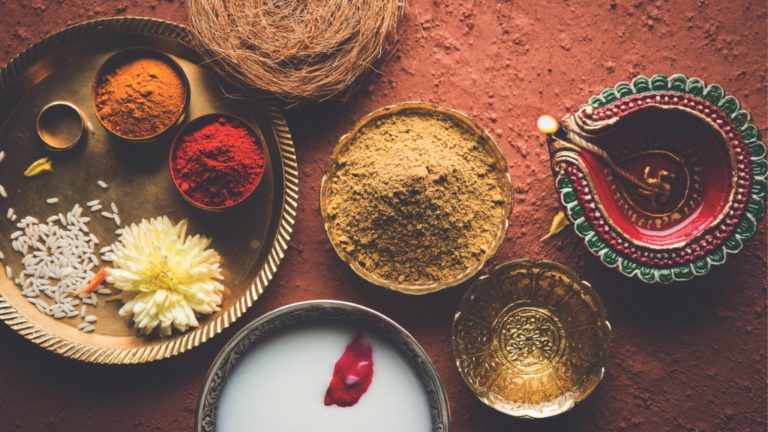
What is a Panchakarma?
The panchakarma is the crown jewel in Ayurveda’s treasure house. Ayurveda is a holistic system of medicine, with roots in Hinduism, that emphasizes preventative and healing therapies along with various purification techniques. In Ayurveda, the five basic elements — ether, air, fire, water and earth — are manifested in the body as three different predominant constitutions, or doshas. Each person has one dosha that dominates, except in the extremely rare case that the three doshas — vata, pitta, and kapha — are in equal balance.
The best metaphor for a panchakarma detox is that it’s like getting an oil change — for your body. It’s kondo-ing your diet, pruning it down to only the most nourishing foods — kitcheree and ghee. It’s detox on “steroids,” combining a restrictive diet with specific massage treatments, rest, yoga, meditation, enemas, and herbs. Think total reboot plus system upgrade.
The idea behind a panchakarma, also called PK, is to bring the body back to its natural order and restore doshic balance. Typically, if one’s predominant dosha is given free reign and its preferences allowed to dominate (in Ayruveda this is known as doshic derangement), it disturbs the harmony of one’s whole being. Consciousness, digestion, and elimination all become impacted, and a mild protest starts to foment in the body, laying the groundwork for chronic disease and ill health.
Slowly, toxins accumulate while digestion weakens, creating a perfect storm for toxin retention — ence the tenacity and thoroughness of the PK protocol. You channel your inner Macbeth to wage war on your deranged doshas and declare “out, damned [toxins].”



